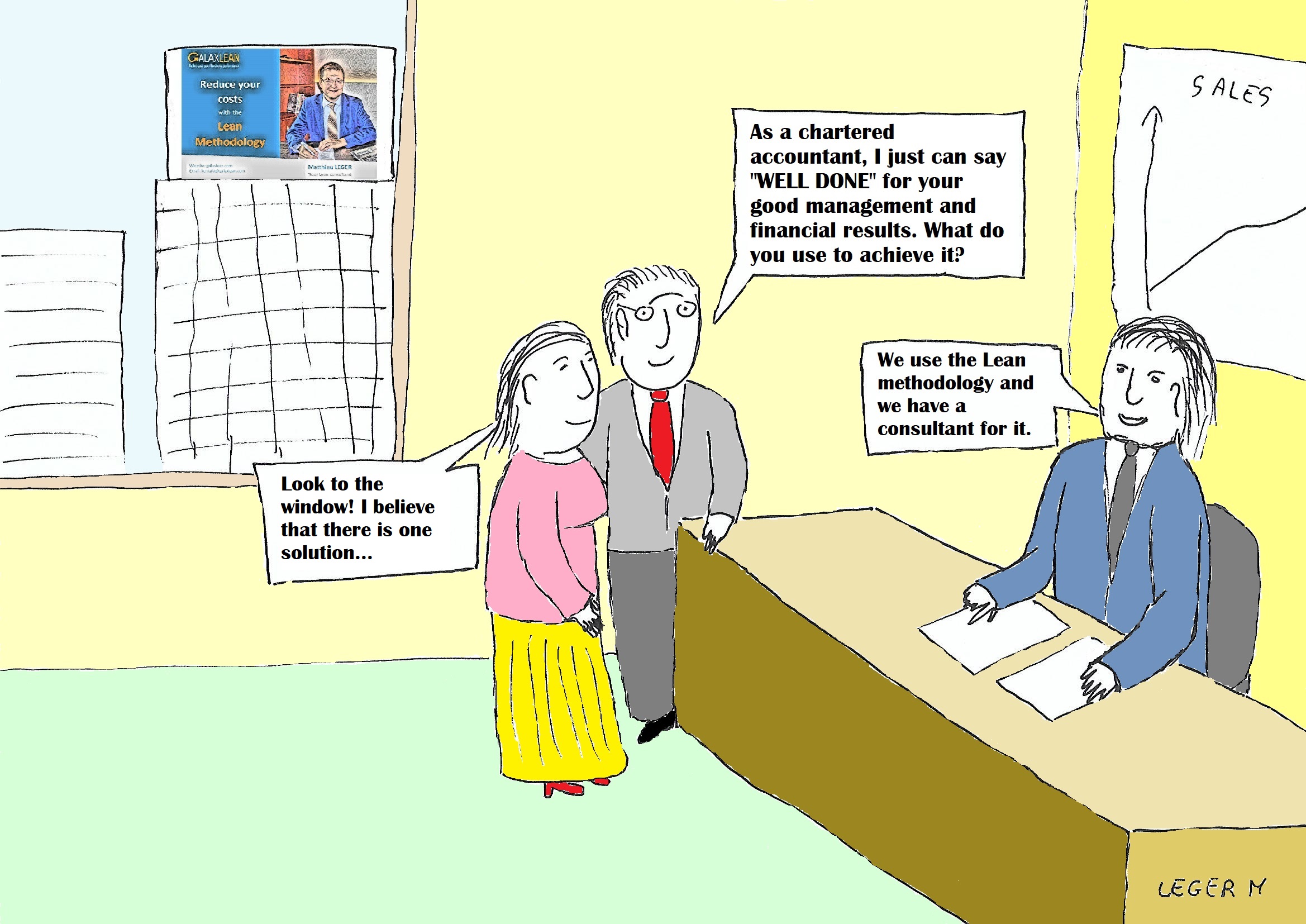Impacts of Lean tools on your financial results
 |
“The position is serious when enterprise becomes the bubble on a whirlpool of speculation.” - The General Theory of Employment, Interest and Money - John Maynard Keynes |
As we can see with this true quote from Keynes (from one of my favourite books), if a company is at risk due to wrong decisions and management, speculations start and might accelerate the fall down of the business. Then, the situation will become serious for everybody. It will force you to react immediately and sometimes, as you wouldn’t like.
But to avoid speculations and put your company in a risky position, you have to apply lean/continuous improvements methodology. In this article, I will speak about the financial impacts of using Kaizen events in your business.
Maximize your operating margin
 |
“There is one rule for the industrialist and that is: Make the best quality of goods possible at the lowest cost possible, paying the highest wages possible.” - Henry Ford |
This wonderful quote from Henry Ford illustrates my first part. If you want to respect this rule, using continuing improvement will help you to reduce your costs and upgrade your quality by:
- Eliminating your defaults on your production
- Reducing your premium freights
- Reducing your processing time between your production steps
- Reduce your raw materials and components consumptions with a better optimization
- Reduce your backlogs
With those costs reduced, you will easily meet your customers’ requirements, delivered them on time, satisfy them and refine your gross margin. With your efforts to satisfy your clients, they will trust you and maybe they will order more goods/services in the future. As well, with a better quality level, new customers might come, you might sell to them and expand your margins.
Example of a company selling lights for cars
For project A, the firm decided to perform an Hoshin to reduce their quality and transportations costs. The financial result in Euro are as follow:
| Before Lean Action | After lean actions (costs reduced) | After lean actions (sales increase) | |
|---|---|---|---|
| Goods sold Sales |
1,000 120,000 |
1,000 120,000 |
1,500 180,000 |
| Transport costs (incl. Premium) Production costs Wages (Only wage increase) Quality costs Overheads |
12,000 60,000 30,000 19,000 10,000 |
6,000 60,000 35,000 8,000 10,000 |
7,500 88,000 45,000 8,500 15,000 |
| Gross margin % Gross margin |
-11,000 -9.2 % |
1,000 0,8 % |
16,000 8.8 % |
With this simple example, even if you have a wage increase, you can observe that applying continuous improvements will help you to boost your margins with a reduction of your transport and quality costs.Your customers are satisfied then they might order more to your business and you will attract new ones (with your better reputation). And because you are still using the lean methodology to improve your quality, your margin will still rise (despite a wage inflation).
Well, can you confirm the quote from Henry Ford with my explanation?
Improve your productivity
Improving your quality will help you to boost your productivity. As we discussed, quality has an impact on your Profit & Loss accounts (by increasing your margins) but productivity as well. To achieve this goal, lean tools are used:
- Root Cause Analysis to identify the source of your problem
- Hoshin / Value Stream Analysis to improve a line / flow efficiency
- 5S to reduce your 7 types of wastes within your company
- Kanban to deliver just-in-time your products / services
- SMED to reduce your changeovers
- Visual Management to facilitate the workflow and decisions making
- …
To tweak your productivity with Continuous Improvement/Lean, your FIRST ACT is to collect data to find your opportunities for improvements. With a brainstorming, you PLAN those new opportunities. Then, you have to DO immediate measures to protect your business and customers. You have to CHECK your immediate measures before deploying LONG-TERM ACTIONS to reach excellence and reduce your costs.
Minimize your capital employed
As well, Kaizen’s workshops will help you to refine your balance sheet.
I take an example (coming from one of my experiences), a factory which was producing headrests for cars. On a specific project, to surpass the quality and swell the productivity on the line, a multi-disciplinary team was created to perform this mission. They did a workshop (Hoshin / Value Stream Analysis) and they obtained the following results:
| Before | After | Improvements | |
|---|---|---|---|
| Space | 100 sqm | 66 sqm | -33 % |
| Sewing machines | 18 | 9 | Divided by 2 |
| Parts produced per shift | 500 | 575 | +15% |
After two weeks of workshop, we can see that they have freed 34 sqm in the production area to welcome new projects. Furthermore, with the line reorganization, they have freed 9 sewing machines which might be used for other projects or sell in second hands.
On your balance sheet, this Kaizen event:
- Reduces fixed assets
- Avoids to buy similar equipment (if you have machinery not used)
- Enhances your cash (if you need to sell equipment)
- Refines your working capital
- Reduces your debts by not borrowing money to the bank (used to invest in equipment available that you already have)
With this example, you can observe that a Lean event (to tweak your productivity) might have an impact on your balance sheet and cash. It will raise your ROCE (Return On Capital Employed) too.
Example with project A:
| Before | After | |
|---|---|---|
| EBIT (a) | -11,000 | 16,000 |
| Capital employed (b) | 100,000 | 80,000 |
| ROCE (a/b) | -11% | 20% |
With project A, we can see by using continuous improvement, it will improve the ROCE in your business.
Have you already observe impacts of Lean activities on your balance sheet and ROCE?
The business image to the public
 |
“The two most important things in any company do not appear in its balance sheet: its reputation and its people.” - Henry Ford |
This other quote from Mr. Ford summarized quite well the impact of a businesses’ image to its performance. In fact, if a company want to attract best talents to join its own projects, they have to consider their people as human, forces, skilled and not as robots or tasks executants. You have to involve your people, listen to them, collect their feedbacks during Kaizen activities. Otherwise, your employees will leave your company, will start to make bad advertisements, you will have difficulties to hire new skilled people and spend a lot of money for bad results. Wrong signals for employees might be:
- Bad atmosphere
- Low wages
- No respect of your people
- Misconducts from one of the directors
- …
All aspects have to take in consideration to attract people. But, a reputation is not only linked to your employees. There is the quality of your products and services that you are making and delivering. If you deliver “shitty” products/services (wrong quality, no good design…), people won’t buy and will transmit bad feedbacks to other potential customers. A bad spiral will start.
Today, companies’ images are going very fast with the internet and new technologies (Facebook, Tweeter,…). Furthermore, if you have a bad reputation, people wouldn’t work for you and you will have difficulties to expand. To avoid that, continuous improvement and listening feedbacks are crucial to move forward, reach Excellence and upgrade your financial results.
Have you already used lean tools in your business to improve your financial results and your image? Please, feel free to contact our consultant or to give your feedback below.

